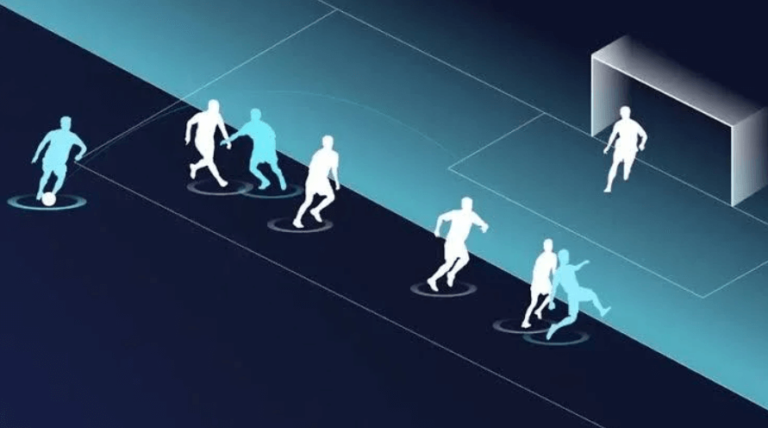Social Security Blames Old Technology for Website Crash
In an increasingly digital world, the expectation is that government services should be streamlined, accessible, and reliable. Unfortunately, when a critical system like the Social Security Administration’s (SSA) website goes down, it raises concerns about the reliability of the infrastructure designed to serve millions of citizens. Recently, the SSA attributed a significant website crash to aging and outdated technology. In this article, we’ll explore how old technology has affected the SSA’s website, the implications of such failures, and what needs to be done to modernize these systems for the future.
Understanding the Issue: What Happened to the SSA Website?
On the morning of the website crash, users attempting to access critical services such as benefits information, applications for Social Security, and other essential functions were greeted with error messages or slow loading times. The SSA responded quickly by stating that the issue was tied to outdated systems, which ultimately led to a breakdown in performance.
This isn’t the first time the SSA’s systems have faced disruptions due to aging technology. With millions relying on the online services for information regarding benefits, any delay or disruption causes major inconvenience.
See also: entrepreneursbreak
The Role of Outdated Technology in System Failures
At the core of the issue lies the use of legacy systems. Legacy technology refers to older systems, software, or hardware that were once state-of-the-art but have since become inefficient and prone to failure. While these systems may have worked in the past, they were not designed to handle the volume and complexity of modern-day needs.
Here are some key reasons why old technology can lead to website crashes:
1. Lack of Compatibility with Modern Technologies
Older systems often struggle to integrate with newer technologies. The SSA’s website needs to interact with various systems to provide users with up-to-date information. When legacy technology isn’t compatible with modern software or hardware, it can result in crashes or slow performance.
2. Insufficient Capacity and Scalability
Aging systems might not have the capacity to handle the traffic generated by millions of users. The SSA website sees significant spikes in traffic, especially during certain times of the year. Older systems simply aren’t built to handle this type of demand, leading to slowdowns or crashes.
3. Vulnerability to Cyber Threats
As technology ages, it becomes more susceptible to cyberattacks. Old software may lack the security updates needed to defend against modern threats. If security breaches occur, it can cause outages and other issues that impact the website’s functionality.
4. Difficulty in Maintaining and Repairing
Maintaining outdated technology can be expensive and labor-intensive. The SSA’s reliance on old systems means that updates, patches, or simple maintenance tasks take longer to execute, potentially leading to vulnerabilities or longer downtimes.
Implications of the Crash for Social Security Recipients
For many individuals, Social Security is a critical source of income, particularly for the elderly, disabled, and low-income families. A website crash or extended downtime can have several serious implications:
1. Inability to Access Important Information
Users rely on the SSA website to access detailed information about their benefits, make changes to their accounts, or even apply for Social Security benefits. When the website is down, individuals are left in the dark regarding their financial security.
2. Delays in Applications and Payments
Many people use the SSA’s online portal to apply for benefits or check the status of their claims. A crash could lead to significant delays in these processes, impacting individuals who rely on timely payments to meet their needs.
3. Increased Call Center Traffic
When the website fails, more individuals turn to call centers for assistance. The SSA’s phone lines become overwhelmed, leading to longer wait times and frustration for individuals trying to resolve their issues.
How the SSA Can Address These Challenges
The Social Security Administration must take immediate and long-term action to address these challenges and ensure that their website and systems are more resilient to crashes. Here are several potential solutions:
1. Modernizing Legacy Systems
The most effective solution is modernizing the existing technology. This would involve replacing or upgrading the old systems with newer, more efficient software and hardware that are better equipped to handle modern demands. This includes upgrading databases, interfaces, and security systems to ensure smoother operation and integration with other government services.
2. Cloud Computing Solutions
Cloud technology offers immense scalability and flexibility. By migrating to the cloud, the SSA could improve its website’s reliability and performance during periods of high traffic. Cloud providers can ensure that systems remain up-to-date and secure, while also offering the necessary computing power to handle spikes in demand.
3. Implementing Robust Backup Systems
To prevent future disruptions, SSA should implement more robust backup systems. This includes having redundant servers and systems that automatically kick in when there is a failure in one area. This would reduce downtime and ensure that critical services are always available to users.
4. Regular System Audits and Testing
Routine audits and testing of existing systems can help identify weaknesses and vulnerabilities before they result in major problems. By proactively monitoring and testing their infrastructure, the SSA can minimize the risk of unexpected outages.
5. Enhanced Security Measures
Security should be a top priority. Older systems may be vulnerable to cyber threats. SSA needs to invest in more advanced security protocols and ensure that their infrastructure is up-to-date with the latest protections against hacking attempts, data breaches, and other threats.
Why Social Security Needs to Act Quickly
The need for modernization is not only about avoiding website crashes, but also about ensuring that the Social Security Administration can effectively serve the needs of its beneficiaries. Many people depend on Social Security as their main source of income, and any disruptions can have severe financial implications.
Aging Population Demands Reliable Systems
As the baby boomer generation ages, more people are relying on Social Security benefits than ever before. This demographic shift means the system needs to be able to handle a growing number of claims, payments, and inquiries.
Increasing Expectations for Digital Services
Citizens are becoming more accustomed to accessing government services online. Whether it’s renewing a passport or applying for benefits, people expect government websites to be just as fast and efficient as private-sector websites. Failing to meet these expectations can erode public trust and cause frustration.
Frequently Asked Questions (FAQs)
1. What caused the Social Security website crash?
The crash was attributed to outdated technology, which struggled to meet the demands of modern online traffic.
2. How does old technology affect the Social Security Administration?
Old systems can lead to slow performance, security vulnerabilities, and an inability to scale during high-traffic periods, causing frequent disruptions and downtime.
3. What are the potential solutions to avoid future crashes?
Upgrading to modern systems, moving to cloud computing, implementing backup systems, and performing regular security audits are key solutions.
4. Why is it important for Social Security to modernize its technology?
Modernization will ensure the system can handle increased demand, provide secure services, and improve overall reliability for millions of users.
5. How often does the SSA website experience downtime?
Though not frequent, the SSA website does experience downtime occasionally, usually due to technical issues related to legacy systems.
6. How can Social Security beneficiaries stay informed about outages?
The SSA offers updates via its social media channels, email notifications, and alert systems on its website to inform users about service disruptions.
Conclusion: A Call for Action
The recent SSA website crash underscores the importance of modernizing outdated systems to meet the needs of today’s digital world. The Social Security Administration must prioritize updating its infrastructure to avoid future disruptions and ensure that its services are reliable and accessible to all Americans. By doing so, they can continue to provide vital support to the millions who depend on them for their financial security.
The future of the Social Security website hinges on embracing technology that can keep up with the demands of a growing, tech-savvy population. It’s time for the SSA to invest in solutions that will safeguard their users and improve service reliability for years to come.


